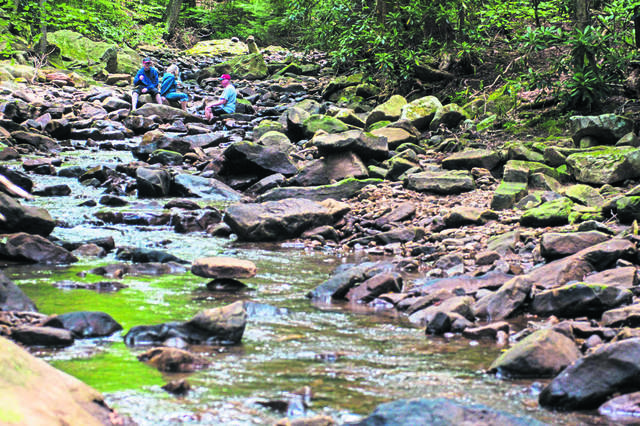https://triblive.com/local/westmoreland/farmers-conservation-districts-applaud-rollback-of-obama-era-clean-water-rule/
Farmers, conservation districts applaud rollback of Obama-era clean water rule

Not long after he took office, President Trump issued an executive order asking the EPA to review a clean water rule that he said exemplified federal government overreach in the Obama years.
The 2015 Waters of the United States regulation increased the number and types of waterways — reportedly 60% of the nation’s bodies of water — covered by the Clean Water Act. The 1972 law applied to “navigable waters,” but the Obama rule expanded the definition of that term to include smaller streams, wetlands and headwaters.
“For the water in the rivers and lakes in our communities that flow to our drinking water to be clean, the streams and wetlands that feed them need to be clean, too,” then-EPA Administrator Gina McCarthy said.
The Obama regulation, although it never went into effect, generated determined opposition from farmers, agricultural groups, commercial developers, home builders and other interests that saw it as an encroachment on private property rights.
On Thursday, the EPA and the U.S. Army Corps of Engineers finalized the Navigable Waters Protection Rule, which clarifies which waterways are covered by the Clean Water Act and which are covered by state regulations.
Environmental groups criticized the Trump rule change as a rollback of environmental protections that had been in place for decades, while the Pennsylvania Farm Bureau praised it as a necessary restoration of farmers’ land and water rights.
Trump made the announcement on the rule change to the American Farm Bureau Federation last Sunday.
“While Pennsylvania is lucky to have the strong protections of our state Clean Streams Law and Environmental Rights Amendment, the loss of federal clean water protections could result in more pollution and damage from large interstate projects like pipelines,” said Abigail M. Jones, senior attorney for PennFuture, an environmental group.
Jones said the new rule also could affect smaller, seasonal headwater streams across the state and increase the burden on the state Department of Environmental Protection.
Pennsylvania Farm Bureau President Rick Ebert said the new rule should help remove confusion over who has jurisdiction over certain bodies of water — the state or the federal government.
“The new water rule establishes that most ditches and typically dry land, including land that is sometimes wet, would not be subject to federal jurisdiction, while permanent waterways, such as lakes, rivers, streams and wetlands, would be subject to federal oversight,” Ebert said.
Farm Bureau spokesman Mark O’Neill said it is “absolutely untrue” that the Trump rule will open the floodgates to water pollution.
O’Neill said farmers had legitimate concerns about the Obama rule and already implemented procedures to reduce pollution, runoff and soil erosion.
“Here in Pennsylvania, we’re the leaders in no-till farming and the use of cover crops that reduce runoff,” he said. “Most farmers have wells on their property, and they drink the water that comes from their land.”
O’Neill noted that the 2015 rule, although it never had time to take effect, raised enough hypothetical scenarios to worry farmers.
“Farmers were concerned that, if it became the rule of law, then it would have provided the authority for the EPA to literally do whatever it wanted on any farm in the country,” he said.
The National Association of Conservation Districts came out in favor of the repeal of the Obama rule.
Jim Pillsbury, hydraulic engineer for the Westmoreland Conservation District (WCD), said he doesn’t think the rule change will affect Pennsylvania much because state environmental rules are often more strict than federal rules.
“If the federal government relaxes a standard here or there, states are allowed to set more strict standards,” Pillsbury said. “In Pennsylvania, our standards were already fairly strict in terms of streams.”
The WCD issues encroachment permits on behalf of the state for work that could affect the course, cross section or quality of a stream, Pillsbury said. In 2018, the WCD issued 151 stream encroachment permits.
Pennsylvania regulations define a stream as a waterway with a defined bed and banks and a visible channel. Such regulations usually apply to perennial streams, which flow year-round, and intermittent streams, which have water only part of the year, Pillsbury said.
Ephemeral streams, which flow only when it is raining, often are exempt from state regulations, he said.
Copyright ©2026— Trib Total Media, LLC (TribLIVE.com)
